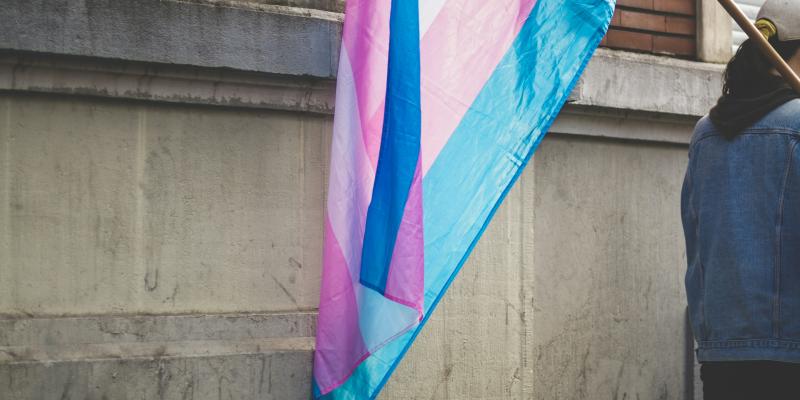Why Does Barely Anyone Talk About Sexual Violence Among Trans Men?
STORY / 27.08.24 / 3 min read
by Lenny Mika Bonk

It’s not because they are at a lower risk – actually, most transgender and non-binary people who were assigned female at birth have stories to share about this. Considering that talking about sexual violence among men is still very stigmatized in general, and transgender as well as non-binary people in general lack visibility in the media, the reasons become clearer.
At the same time, it’s also common for romantic partners and family to manipulate trans people by making them feel unwanted and unlovable by anyone else, so the tendency for them to stay in toxic relationships increases, also because of some sort of dependency on their partners and/or family members.
In general, it’s no secret that queer people are more likely to become victims of hate crimes of any kind. It’s a devastating fact as it is, however, statistics show shocking results when comparing the number of victims of sexual violence based on being trans- or cisgender.
According to a study by the Williams Institute at UCLA School of Law, transgender people are over four times more likely than cisgender people to experience violent victimization, including rape, sexual assault, and aggravated or simple assault. Results showed that, respectively, transgender women and men had higher rates of violent victimization than cisgender women and men, and transgender men’s rates are slightly higher than transgender women’s.
In direct comparison:
| Gender | How many per 1000 |
| Transgender Woman | 86.1 |
| Cisgender Woman | 23.7 |
| Transgender Man | 107.5 |
| Cisgender Man | 19.8 |
Source: These findings are from the report, “Gender Identity Disparities in Criminal Victimization: National Crime Victimization Survey, 2017–2018” which appeared in the American Journal of Public Health and is co-authored by Andrew R. Flores, Ph.D., Ilan Meyer, Ph.D., and Lynn L. Langton, Ph.D., and Jody L. Herman, Ph.D. (https://williamsinstitute.law.ucla.edu/press/ncvs-trans-press-release/)
In conclusion, based on these results, it becomes clear that there is a critical need for gender-affirming violence prevention, support services, and policies that protect transgender individuals.
Due to a lack of helpful resources specifically for trans people, they often do not reach out for help and support because they believe there is no help available out there for them. Even though there are not nearly enough places to seek support specifically as a transgender survivor of sexual abuse, there are a lot of support services for victims and survivors of sexual violence in general. In the end, regardless of gender, everyone is worth to receive the help and support they need.
Still, there are support services, especially for trans and/or queer people, such as the LGBT Foundation based in Manchester, UK or Men As Well, a Dutch organization.
As if it was not terrible enough to realize all these things, it is also a common thing for transgender survivors of abuse to lose themselves in myths that make them feel even worse.
For example, lots of transgender survivors think that they “deserve to be sexually abused or assaulted” simply because they’re trans. This couldn’t be further from the truth – while no one deserves to become a victim of such crimes, one’s gender identity certainly does not justify any sort of abuse or assault.
On the other side, trans people also tend to be in denial about their experience because they think “no one wants to abuse or assault a transgender sexually.” At the same time, a lot of transgender survivors of sexual abuse and assault feel angry and ashamed of themselves being victimized; one common mental reaction is “This would not have happened to me if I was not trans.”
After all, anyone could potentially become a victim of sexual crime – regardless of one’s gender and/or the gender of the perpetrator – but that does not justify anything. No one deserves to be abused or assaulted. No one deserves to go through these terrible things!
Yet it still happens, and as visible in the statistics above, transgender people, especially transgender men, are at the highest risk of being victims of sexual violence. Still, there are not enough support services and helpful resources for them. That is a huge problem for multiple reasons, and there is a lot that we all have to work on in terms of making a change about this.
Sources:
https://williamsinstitute.law.ucla.edu/press/ncvs-trans-press-release/
https://lgbt.foundation/help/lgbtq-independent-sexual-violence-advisor/